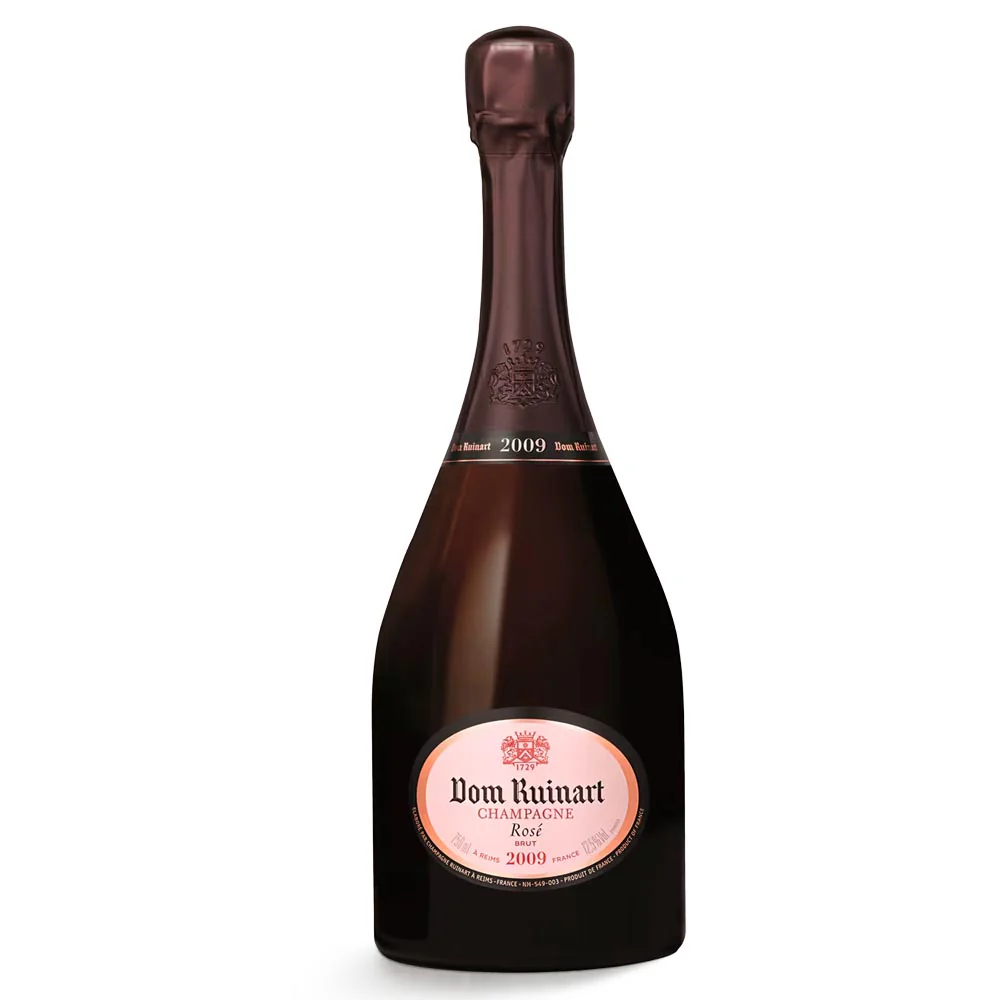Ruinart - Dom Ruinart Rosé
96 puntos - The Wine Advocate
96 puntos - The Wine Advocate
94 puntos - The Wine Advocate
96 puntos - The Wine Advocate
96 puntos - The Wine Advocate
92 puntos - The Wine Advocate

Ruinart - Dom Ruinart Rosé
96 puntos - The Wine Advocate
96 puntos - The Wine Advocate
94 puntos - The Wine Advocate
96 puntos - The Wine Advocate
96 puntos - The Wine Advocate
92 puntos - The Wine Advocate
Precio normal€292.74
€292.74
/
- 6 en stock
- Inventario en camino
A blend of 85% Chardonnay and 15% Pinot Noir from Aÿ and a dosage of four grams per liter, the 2009 Dom Ruinart Rosé possesses a complex, vibrant bouquet with aromas of cherry, spring flowers, gooseberry, tangerine, almonds, pastry and slightly reductive elegant notes. Full-bodied, fleshy and vinous, the palate is perfectly balanced, dense and concentrated, with a delicate mousse and a long, saline, penetrating finish. There’s plenty of structure and substance here. There is no reason to wait, but it will age beautifully for another five to eight years.
The 2007 Dom Ruinart Rosé is showing brilliantly, bursting from the glass with exuberant aromas of blood orange, tangerine and raspberries, mingled with hints of buttered toast, brioche and spices. Full-bodied, deep and vinous, it's layered and elegantly muscular, with terrific concentration and a racy spine of acidity, enlivened by a pillowy mousse. Concluding with a long and sapid finish, it's aromatically open but structurally tightly wound, so I suspect it will reward another few years' age on cork, even if it's hard to resist today. In any case, it deserves to participate in any discussion of the 2007 Champagne vintage's high points.
Including fully 19% red wine made from Sillery Pinot Noir, the 2004 Dom Ruinart Rosé was disgorged in February 2016 with four grams per liter dosage. Displaying complex aromas of red berries, dried orange rind, potpourri, iodine, toasted nuts and wet chalk, it's medium to full-bodied, broad and textural, with a more multidimensional, vinous profile than its Blanc de Blancs counterpart, with lively acids and a chalky finish.
Disgorged in June 2014 with 5.5 grams per liter dosage, the 2002 Dom Ruinart Rosé includes 20% red Pinot Noir from Sillery and Verzenay. Unfurling in the glass with aromas of brioche, mirabelle plum, dried orange rind and fresh pastry, it's full-bodied, broad and gourmand, with a creamy mousse, delicate phenolic grip and excellent balance. This is one of the finest renditions of this cuvée that I've tasted.
Disgorged in June 2014 with 5.5 grams per liter dosage, the 2002 Dom Ruinart Rosé includes 20% red Pinot Noir from Sillery and Verzenay. Unfurling in the glass with aromas of brioche, mirabelle plum, dried orange rind and fresh pastry, it's full-bodied, broad and gourmand, with a creamy mousse, delicate phenolic grip and excellent balance. This is one of the finest renditions of this cuvée that I've tasted.
The Ruinart 1998 Brut Rose Dom Ruinart I sampled was noticeably marked in texture and complexity by both its long stay on the lees and considerable time in bottle, not to mention by its significant share of red wine. Sour cherry and rhubarb, rose hip and geranium, smoky black tea and old leather, grapefruit zest and sea water combine for an aromatic performance whose counterpart on a still very sappy and vivacious yet expansive and richly textured palate is satisfyingly long-lasting. The roughly 15% of red Pinot added here to what is essentially the same cuvee as the white Dom Ruinart of its vintage received a longer fermentation on its skins than applied to Ruinart’s “regular” rose, which may be one reason for the nutty, meaty depth that comes out in the finish. It certainly helps explain the invigorating sense of apple skin chew and cherry pit piquancy. As so often in the realm of prestige rose, one is being asked to pay an enormous premium vis-a-vis the corresponding white wine, but in this instance you’re also paying for considerable additional aging. And this impressive bottling could easily remain so for several more years.
Imported by Moet Hennessy, New York, NY; tel. (212) 251-8200
Tipo: |
Espumoso |
País: |
Francia |
Región: |
Champán |
Denominación: |
Champán |
Productor: |
Ruinart |
Uvas/Mezcla: |
Chardonnay, Pinot Noir |
ABV: |
12.5% |
Sugerencias de maridaje: |
Duck, Charcuterie and Cured Meats, Shellfish, Lobster, Cheese Plate, Sushi and Sashimi, Asian Cuisine |
Entrega local
Tenemos una flota de furgonetas que entregan en toda la Riviera francesa e italiana, las tarifas se calculan en función de la distancia en la etapa de carro. Opción de reservar hora y fecha.
Para entregas en zonas más alejadas, póngase en contacto con nosotros: +33 4 65 84 99 51
Francia / Mónaco
1 - 2 días laborables de entrega en Francia, para los pedidos realizados antes de las 14h.
Opciones de mensajería y puntos de entrega disponibles en la caja.
UE - Continente
Entrega en 1 a 3 días en toda la UE continental, para pedidos realizados antes de las 14.00 horas. Un día más para las islas.
Opciones de mensajería y puntos de entrega disponibles en la caja.
Resto del mundo
Llame para solicitar presupuesto: +33 4 65 84 99 51












